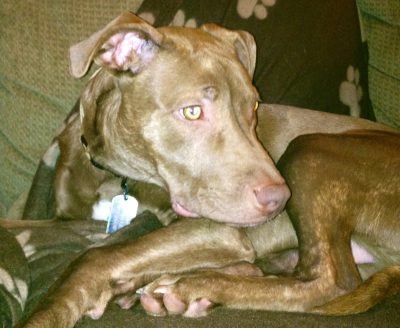Unfortunately, accidental and intentional poisoning of pets happens every year in the United States. The toxicology laboratory at the Michigan State University Veterinary Diagnostic Laboratory, part of the College of Veterinary Medicine, conducts thousands of tests annually to help veterinarians and owners diagnose toxins involved in poisoning incidents. Learning more about common dangers and taking preventative steps to reduce your pet’s access to harmful substances can help you make your pet safer.
If you believe your pet is showing signs of poisoning, contact a poison control hotline immediately, follow their instructions, and seek veterinary medical help. If your pet has vomited, bring a sample with you. If possible, also bring a sample (including packaging) of what your pet has ingested.
24/7 Poison Control Resources for Pet Owners
ASPCA Animal Poison Control Center
888.426.4435
May charge a consultation fee by credit card
Pet Poison Helpline
800.213.6680
Per incident fee, payable by credit card
Common Household Dangers – All Pets
- Antifreeze containing ethylene glycol (safer alternatives containing propylene glycol are available)
- Batteries (including small button cells found in watches, remote controls, and other devices)
- Fertilizers
- Household cleaners
- Human medications*, including those commonly found in most homes:
- cold medications
- pain killers—including acetaminophen (Tylenol ®or generic) and NSAIDs such as ibuprofen (Advil®, Motrin®, or generic) and naproxen (Aleve® or generic)
- Pesticides (insect and snail bait containing methomyl or metaldehyde)
- Rodenticides (rat and mouse bait)**
Dangerous Foods and Plants – All Pets
- Alcoholic beverages
- Autumn Crocus
- Azalea
- Chocolate
- Coffee
- Cyclamen
- Garlic
- Moldy or spoiled foods
- Onions, onion powder
- Sago Palm
For an extensive list of toxic and non-toxic plants, see www.aspca.org/pet-care/poison-control/plants/.
Especially Dangerous for Dogs
- Avocado
- Common backyard mushrooms
- Macadamia nuts
- Products containing xylitol (sugar-free gum, candy, etc.)
- Raisins and grapes
- Yeast dough
Especially Dangerous for Cats
- Lilies (Tiger, Day, Asiatic, Easter)—even small amounts (1-2 leaves or pollen) can be deadly due to severe kidney failure
- Topical flea and tick medicine made for dogs (never put a topical insecticide designed for dogs on a cat!
Pets & Poison Control: Additional Information
*A Special Note About Medications
Keep any and all human medications securely out of the reach of pets and do not give your pet a medication designed for humans without instruction from your veterinarian.
Animals metabolize drugs differently and even drugs that we consider very safe for us can be deadly to our pets with just a small dose.
In addition to the drugs listed above, other common medications potentially lethal for pets include anti-cancer drugs, antidepressant or anti-anxiety medications, sleep aids, amphetamines (e.g. to treat ADD/ADHD), vitamins, and diet pills.
**An Important Notice About Rodenticides
There is little time for error if bromethalin is ingested by a pet. Contact a pet poison hotline immediately and seek veterinary treatment.
Recent regulation changes by the Environmental Protection Agency (EPA) require that manufacturers of rodenticides for consumer use stop using second-generation or long-acting anticoagulants. Manufacturers must also contain bait in tamperresistant bait stations. Pellets and other forms of bait that cannot be secured in bait stations are prohibited.
The manufacturer of D-Con products has complied with the new EPA regulations and has stopped producing prohibited anti-coagulant products. These products are no longer available at retailers.
The new generation of rodenticides currently on the market often use bromethalin, a toxin for which there is no antidote. There is also no test to detect it—except for a postmortem exam. Bromethalin is a fast-acting neurotoxin.
Because consumers may have anticoagulant and/ or bromethalin products in their homes, having the container available to provide information to poison hotline professionals and your veterinarian is immensely helpful and will determine the appropriate treatment for your pet in the event of accidental ingestion.
A Poison Control Success Story

Meet Luke. When he was just 6 months old, this pit bull mix got into some trouble. While visiting family out of town, his owner brought him inside through the garage. As she looked for a towel to wipe Luke’s paws before she took him off the leash, the owner heard him eating something. She turned to find him with his face in a plate of rodenticide.
The owner immediately pulled him away and removed the pellets he hadn’t swallowed from his mouth. She rushed him inside and confirmed with the homeowner that the green pellets were in fact rodenticide. The poison container was quickly located and while she called a poison helpline, the homeowner called his local veterinary clinic. With instructions to get to the clinic right away, Luke was immediately loaded into the car for a 10 minute drive to the clinic.
Upon arrival, Luke was weighed and taken back to the exam room. The veterinarian induced vomiting until Luke’s stomach was empty and confirmed that he had eaten several pellets.
Luke’s owner followed the veterinarian’s instructions carefully. This included giving Luke vitamin K daily and making a follow-up visit with his regular veterinarian. During that appointment, Luke’s doctor was happy to tell his owner Luke was a perfectly healthy puppy.
This may not seem like a story about luck, but it was fortunate that the rodenticide Luke ate was an anticoagulant product and not one that uses bromethalin. And not all owners are lucky enough to catch their pets in the act of eating poison. Quick thinking, remaining calm, making the right phone calls, and seeking medical treatment immediately all helped this story to have a happy ending.
This fact sheet is provided by the Veterinary Diagnostic Laboratory at the Michigan State University College of Veterinary Medicine as a public service. It is not intended to diagnose any disease. Please contact your veterinary medical service provider if you have questions regarding this or any other veterinary medical issue.
Access a printable PDF of this guide.
